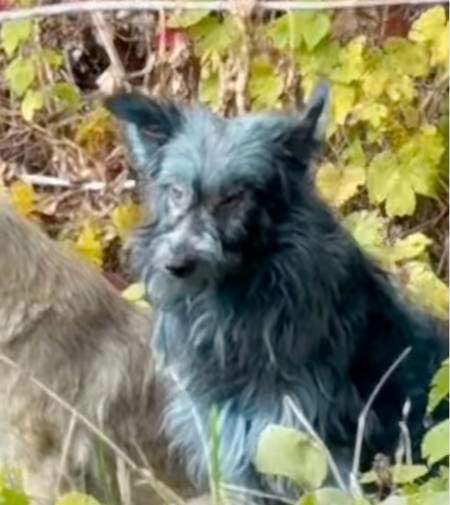Nearly forty years after the Chernobyl disaster, the exclusion zone is once again making headlines — but this time, it’s not radiation causing a stir. Instead, it’s a mysterious pack of blue-tinted dogs seen roaming the area that has captured global attention.
Most people recognize Chernobyl as the site of the world’s worst nuclear accident, but decades later, this once-forbidden land continues to surprise. The 1,017-square-mile exclusion zone, created to limit human exposure to radiation and prevent illnesses like thyroid cancer, cataracts, and leukemia, has been quietly reclaimed by nature. Wild horses, wolves, and birds now wander freely among the ruins of the abandoned city.
Among the animals that inhabit the area are hundreds of stray dogs — descendants of the pets left behind during the mass evacuation in 1986. Most look ordinary, with brown, black, or gray coats. But recent sightings of dogs with an unusual bluish tint have sparked fascination and confusion worldwide.
The phenomenon went viral after the organization Dogs of Chernobyl shared a video showing several of these strays — including one whose fur was distinctly blue. The clip quickly spread across social media, with thousands speculating about the cause behind the bizarre coloration.
The group wrote in their post: “They were not blue last week. We do not know the reason, and we are attempting to catch them so we can find out what is happening.”

According to the organization, the explanation is likely far more mundane than radioactive mutation. “Most likely, they’re getting into some sort of chemical,” they added.
Despite their strange appearance, the group reassured followers that the dogs appeared healthy and energetic, describing them as “very active and healthy” with no visible signs of illness related to their odd fur color.
Veterinarian Jennifer Betz, who has led multiple field missions inside the exclusion zone, also weighed in to debunk viral rumors that radiation had “turned the dogs blue.”
Speaking to IFL Science, Betz explained: “They appear to have been rolling in a substance that had accumulated on their fur.” She continued, “We are suspecting that this substance was from an old portable toilet that was in the same location as the dogs; however, we were unable to positively confirm our suspicions.”
Adding further clarity, she emphasized: “We are not in any way saying that it is related to radiation in Chornobyl.”
Her statement helped calm widespread speculation, pointing instead to a chemical substance as the most probable cause of the dogs’ strange hue.
Today, an estimated 700 dogs live within the Chernobyl exclusion zone. Most are believed to be the descendants of domestic pets abandoned during the hasty 1986 evacuation when families were forced to flee to escape radioactive fallout.
Since 2017, volunteer groups like Dogs of Chernobyl have worked tirelessly to care for these animals — providing food, vaccinations, and medical treatment to improve their survival chances in one of the harshest environments on Earth.
Radiation in the region still measures around 11.28 millirems — about six times higher than what’s considered safe for humans. Yet, in the absence of human interference, nature has remarkably thrived. Over time, scientists have observed that many plants and animals have adapted to the radioactive landscape with surprising resilience.
In 2024, researchers even found that some Chernobyl dogs may have developed what they called “radiation resistance.” These dogs showed stronger immunity to radiation, heavy metals, and pollution, suggesting that generations of exposure may have altered their biological makeup.
Environmental health scientist Norman J. Kleiman from Columbia University led one such study, examining how prolonged exposure to Chernobyl’s environment affected the dogs’ genetics. His team collected blood samples from 116 semi-feral dogs across the zone, comparing those from high-radiation areas with others from less-contaminated regions.
The findings revealed two distinct dog populations — each showing genetic traits that helped them adapt to their surroundings. These traits have been passed down through generations, creating a unique group of animals capable of surviving in one of the most radioactive places on Earth.
Scientists identified 52 genes that “could be associated with exposure to the contamination of the environment at the nuclear power plant.”
View this post on Instagram
